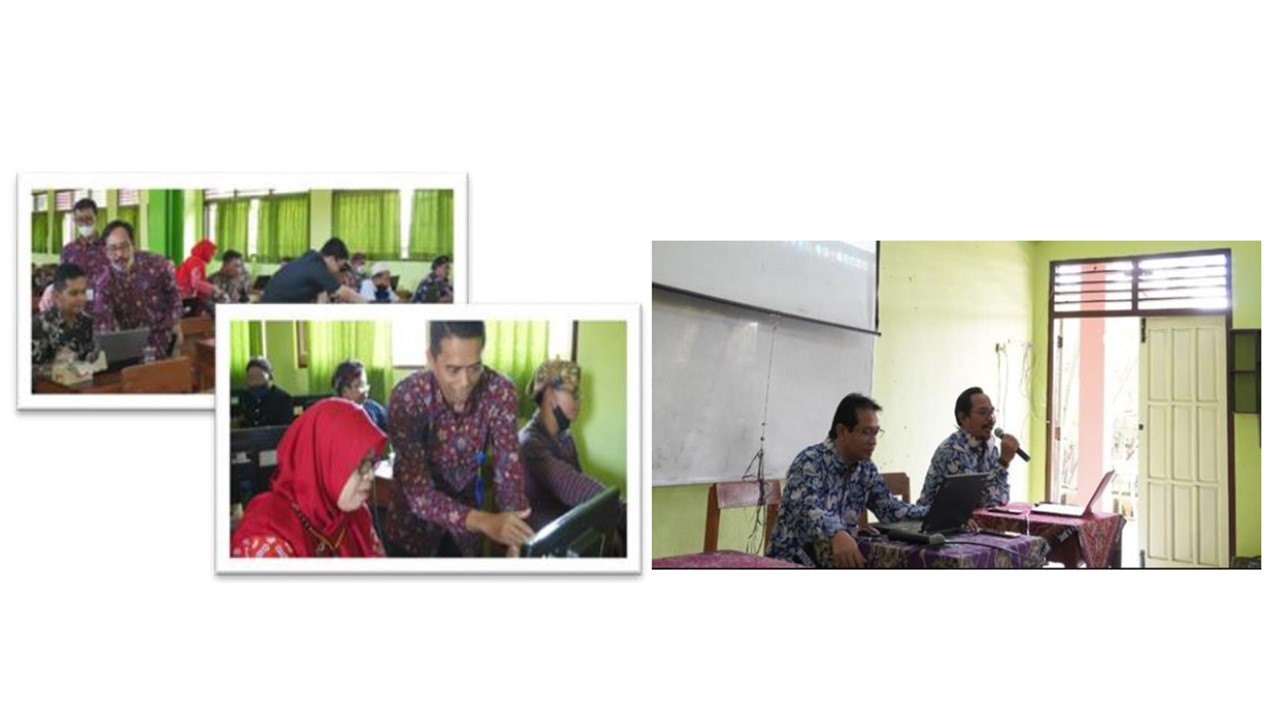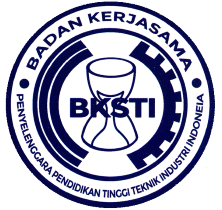Improving the Quality of Learning Content for Teachers of SMK Windusari Magelang
DOI:
https://doi.org/10.12928/spekta.v3i1.5993Keywords:
Training, power pointers, Content, improving, QualityAbstract
Background: The need to increase the mastery of Information and Computer Technology (ICT) in teaching and learning activities is essential and urgent, especially during the COVID-19 pandemic. The PowerPoint application is a popular application for creating learning content, but most teachers are only at the level of "powerpointers". SMK Negeri Windusari, as a vocational high school, requires an increase in the level of its educators, namely those who can increase learning outcomes, one of which is by developing multimedia content based on PowerPoint. This training was in collaboration with UNIMMA Informatics Engineering. It was attended by twenty-four teachers starting with a pre-test and ending with a post-test to measure the level of success.
Contribution: Improving the quality of content to support learning outcomes.
Method: The training on the use of ICT for learning begins with observation through a pre-test and ends with a presentation of the training results, and then measures progress using a post-test.
Results: The results of the training showed that most of the participants showed improvement.
Conclusion: This training is expected to be sustainable as a form of support for improving the quality of learning content
References
B. A. Siagian, “Analisis Produk Pembelajaran Menulis,” HKBP Nommensen, no. x, 2016.
R. Muyu, C. Poluakan, and U. E. B. Yeremia, “Understanding Usability Test of Operating Systems in University : Evidence from Indonesia,” vol. 1, no. 2, pp. 1–7, 2022.
I. Bahroni, R. Purwanto, and N. W. Rahadi, “Pelatihan Pembuatan Media Pembelajaran Berbasis Mobile Menggunakan PowerPoint Bagi Guru-guru SMP, SMK dan SMA Di Kabupaten Cilacap,” Madani Indones. J. Civ. Soc., vol. 1, no. 1, pp. 38–43, 2019, doi: 10.35970/madani.v1i1.33.
A. Lohr et al., “On powerpointers, clickerers, and digital pros: Investigating the initiation of digital learning activities by teachers in higher education,” Comput. Human Behav., vol. 119, no. January, p. 106715, 2021, doi: 10.1016/j.chb.2021.106715.
G. Mesfin, G. Ghinea, T. M. Grønli, and W. Y. Hwang, “Enhanced agility of e-learning adoption in high schools,” Educ. Technol. Soc., vol. 21, no. 4, pp. 157–170, 2018, [Online]. Available: https://www.jstor.org/stable/26511546.
L. LeFebvre, M. Parsons, C. Entwistle, R. Boyd, and M. Allen, “Rethinking PowerPoint Slide Design for Multimedia Learning,” J. Educ. Technol. Syst., vol. 50, no. 4, pp. 503–520, Jun. 2022, doi: 10.1177/00472395221077628
R. Djalante et al., “Review and analysis of current responses to COVID-19 in Indonesia: Period of January to March 2020,” Prog. Disaster Sci., 2020, doi: 10.1016/j.pdisas.2020.100091.
P. Hendradi, M. K. A. Ghani, S. N. M. Mohamad, and D. Sasongko, “E-learning Service Framework Implementation for COVID-19 pandemic (Case study Informatic dept. Universitas Muhammadiyah Magelang),” Urecol Journal. Part G Multidiscip. Res., vol. 1, no. 2, pp. 67–76, 2021, doi: https://doi.org/10.53017/ujmr.118.
S. Jamal, “Analisis Kesiapan Pembelajaran E-Learning Saat Pandemi Covid-19 Di SMK Negeri 1 Tambelangan,” J. Kajian, Penelit. dan Pengemb. Kependidikan, vol. 6356, pp. 149–154, 2020, [Online]. Available: http://journal.ummat.ac.id/index.php/paedagoria Prefix.
G. Dennys and T. Sunaryo, “Perbandingan Capaian Pembelajaran Model Cooperative Learning dan Model Pembelajaran Ceramah di SMK Pangudi Luhur Rahayu II Cijantung,” J. Manaj. Pendidik., vol. 4, no. 1, pp. 1–23, 2018, [Online]. Available: ejournal.uki.ac.id
N. Kerimbayev, N. Nurym, А. Akramova, and S. Abdykarimova, “Virtual educational environment: interactive communication using LMS Moodle,” Educ. Inf. Technol., vol. 25, no. 3, pp. 1965–1982, 2020, doi: 10.1007/s10639-019-10067-5.
Ramadiani, Azainil, A. N. Hidayanto, D. M. Khairina, and M. L. Jundillah, “Teacher and student readiness using e-learning and m-learning,” Bull. Electr. Eng. Informatics, vol. 9, no. 3, pp. 1176–1182, 2020, doi: 10.11591/eei.v9i3.2006.
P. A. Resdasari, H. Nurtjahjanti, and L. N. Ardhiani, “Impact of Changes in Teaching Methods During the COVID-19 Pandemic: The Effect of Integrative E- Learning on Readiness for Change and Interest in Learning Among Indonesian University SPEKTA Vol 3. No.1 June 2022 pp. 1-15 108 10.12198/spekta.v3i1.xxxxStudents,” Int. Rev. Res. Open Distrib. Learn., vol. 22, no. 2, 2021, doi: https://doi.org/10.19173/irrodl.v22i2.5143
P. Pannen, K. Riset, D.Teknologi, and R. D. Riyanti, “Indonesia Cyber Education Institute: Assuring Quality of Online Education in Indonesia,”Poceedings IAC, no. May, pp.100107,2019,[Online].Available:https://www.researchgate.net/publication/351548440
J. Valverde-Berrocoso, M. del Carmen Garrido-Arroyo, C. Burgos-Videla, and M. B. Morales-Cevallos, “Trends in educational research about e-Learning: A systematic literature review (2009-2018),” Sustain., vol. 12, no. 12, 2020, doi: 10.3390/su12125153.
R. Garcia, K. Falkner, and R. Vivian, “Systematic literature review: Self-Regulated Learning strategies using e-learning tools for Computer Science,” Comput. Educ., vol. 123, pp. 150–163, 2018, doi: 10.1016/j.compedu.2018.05.006.
H. Wibawanto, “E-Learning Quality Evaluation Instrument for SPADA Indonesia,” vol. 379, no. Veic, pp. 86–91, 2019, doi: 10.2991/assehr.k.191217.015.
Z. R. Alashhab, M. Anbar, M. M. Singh, Y.-B. Leau, Z. A. Al-Sai, and S. Abu Alhayja’a, “Impact of coronavirus pandemic crisis on technologies and cloud computing applications,” J. Electron. Sci. Technol., no. August, p. 100059, 2020, doi: 10.1016/j.jnlest.2020.100059.
M. L. Jundillah, J. E. Suseno, and B. Surarso, “Evaluation of E-learning Websites Using the Webqual Method and Importance Performance Analysis,” E3S Web of Conferences, vol. 125. 2019, doi: 10.1051/e3sconf/201912524001.
S. C. Pan and F. Sana, “Pretesting versus posttesting: Comparing the pedagogical benefits of errorful generation and retrieval practice.,” J. Exp. Psychol. Appl., vol. 27, no. 2, pp. 237–257, Jun. 2021, doi: 10.1037/xap0000345.
K. Wardany, “Pelatihan Penbuatan Video Pembelajaran menggunakan Aplikasi Camtasia Studio berbasis powerpoint Bagi Guru SMK Integral Minhajuth Thullab Pekalongan,” J. Pengabdi. Sriwij., vol. 8, no. 4, pp. 1104–1111, Dec. 2020, doi: 10.37061/jps.v8i4.13072

Downloads
Published
How to Cite
Issue
Section
License
Copyright (c) 2022 Purwono Hendradi, Uky Yudatama, Nuryanto, Endah Ratna Arumi, Setiya Nugroho

This work is licensed under a Creative Commons Attribution-ShareAlike 4.0 International License.
Authors who publish with SPEKTA (Jurnal Pengabdian Kepada Masyarakat: Teknologi dan Aplikasi) agree to the following terms:
- Authors retain copyright and grant the journal the right of first publication with the work simultaneously licensed under a Creative Commons Attribution License (CC BY-SA 4.0) that allows others to share the work with an acknowledgment of the work's authorship and initial publication in this journal.
- Authors are able to enter into separate, additional contractual arrangements for the non-exclusive distribution of the journal's published version of the work (e.g., post it to an institutional repository or publish it in a book), with an acknowledgment of its initial publication in this journal.
- Authors are permitted and encouraged to post their work online (e.g., in institutional repositories or on their website) prior to and during the submission process, as it can lead to productive exchanges, as well as earlier and greater citation of published work.

This work is licensed under a Creative Commons Attribution-ShareAlike 4.0 International License.












